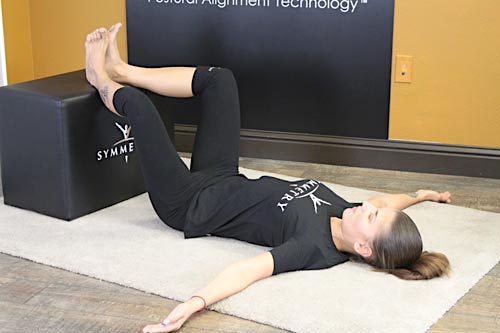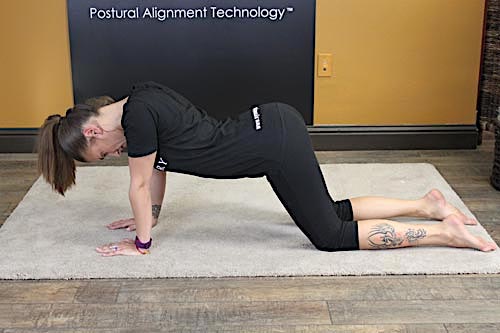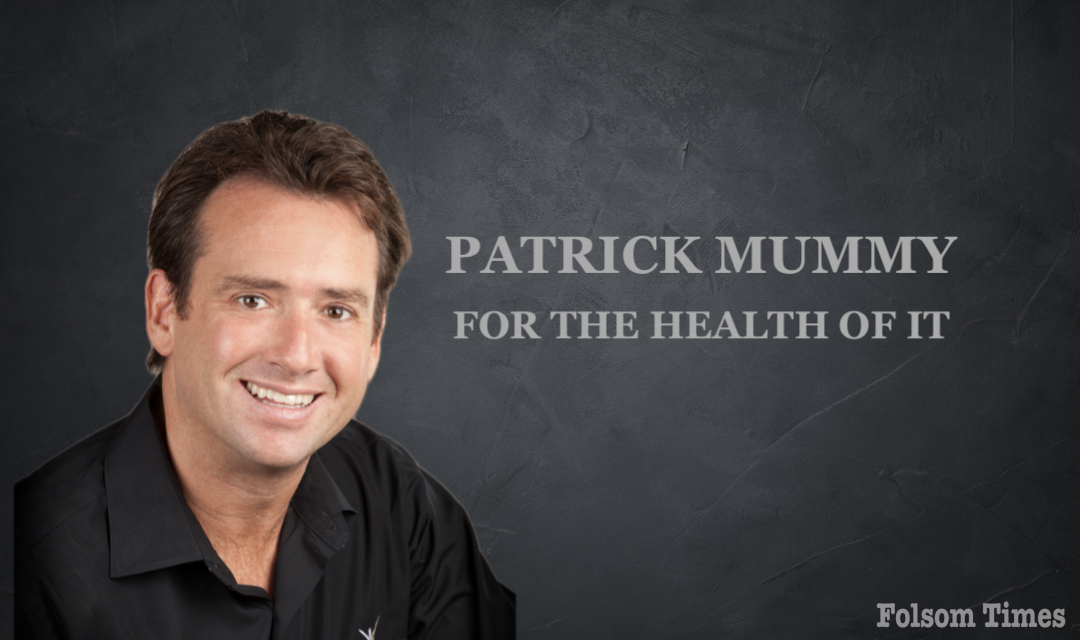Ok, January has come and gone. And so have your resolutions more than likely! In our January column we talked about how to get into the rhythm of forming new habits to sustain change. Again, if you don’t have the right system and support, depending on your goals, then change is really hard to achieve.
With Symmetry, our goal is to get our clients to stretch at home every day. And the reason our clients are successful is because we measure their posture to be able to educate them as to why they are in pain. Through these measurements, we create their specific stretching routine which is placed on their Symmetry app to empower them to actually reach the habit stage with support and consistency. Of course, this takes a few months of checks and balances, but if you are serious about getting to the point where you don’t have to rely on your practitioner to “fix” you every time you hurt, then perhaps we can tease you with the following generic routine to get you started to be feeling great. Our motto: “If you can’t take your chiropractor home with you every day, then what are you doing to hold your adjustments?”
Try this routine for a couple of weeks, in order, and let us know how you feel (Check with your doctor first if you are unsure). Hopefully, this will bring some positivity into your life, and if so, consider calling us to change the rest of it!
Hip Rotations (Static Floor):
Lying on your back with your knees and hips bent at 90 degrees and legs on an 18-inch block or chair, place your feet together with your toes pulled back half-way out on the block. KEEPING YOUR FEET STRAIGHT AND TOGETHER slowly spread your knees apart while pivoting on the inside of your feet as they stay together. Do not let your feet separate as your knees widen apart and try to keep them flexed throughout the motion. Your practitioner may have you place a 6 block in between your feet for more support. Perform 2 sets of 10 to 20 repetitions.

TFL Stretch (Bent Leg): Start on your back with your legs straight out, knees and feet hip-width and pointing up to the ceiling. Keep your arms straight out from your side with your palms up. Tighten one leg and flex your foot back, raise the other leg to 90 degrees at the hip and then bend that knee to 90 degrees. Take your opposite hand and reach to the outside of the elevated knee and pull your entire leg across your body without the opposite shoulder rising off the floor. Make sure that your other leg stays tight, feet flexed at the ankle. Look the opposite direction and keep your stomach and upper torso RELAXED. BREATHE! Hold for the allotted amount of time and then switch. Hold for 30 seconds to 1 minute per side.

Extended Ankle Abduction: Start with your hands and knees hip-width and perpendicular to floor. Walk your hands forward 4-6 and allow your shoulders to reposition over your hands without moving your knees on the floor. With your hips now in front of your knees, allow your back to sway, shoulder blades to collapse together, and head to drop, but keep your elbows locked. While holding this position, press out on a strap (or belt) hip-width at your ankles for one second and then release. Feel the contraction on the outside of your hips. Breathe and relax your stomach. In between each set, keep your hands in the same position and push your body back to stretch out your lower back. Perform 2 sets of 10 to 20 repetitions.

Shoulder Rotations (Kneeling): Kneeling with your knees 4 inches apart, induce an arch in your lower back by rolling your hips forward and not by leaning your torso back. Position your hands with your knuckles on your temples, palms facing to the front. Keeping your knuckles on your temples and your wrists from bending, bring your elbows together and touch in front of your chest, but chin-high, with your palms now facing each other. Try to keep your head still by not bobbing it back and forth as you try and touch your elbows together. Then separate your elbows by pulling your arms back, squeezing your shoulder blades together and then repeat. Keep your stomach relaxed by inhaling as you separate your elbows and exhaling as you bring your elbows together. Perform 2 sets of 10 to 20 repetitions.
About Patrick Mummy and Symmetry for Health
Whenever Symmetry gets a client into their office, they ask them if anyone has ever explained their pain as it relates to gravity. The answer inevitably is ‘no’. This is because western medicine tends to move pain to the forefront of the perceived problem and therefore the majority of the conversation is focused on the pain itself. For example, many of Symmetry’s clients are very excited to show them their X-rays or MRI reports. They assume the Symmetry staff will also want to talk about these reports because that is what most clients are used to talking about when dealing with their pain. To Symmetry, pain is simply the by-product of systemic breakdown due to years of dysfunction and not a complete reason in and of itself.
Patrick Mummy is the owner and founder of Symmetry, created his company in 1997 in San Diego to complete the tie between reactive medicine and preventative medicine. In 2007 Patrick received a patent on his quantitative approach to the human frame and the treatment of the human frame, called AlignSmart. Ironically, this was the same year he moved back up to northern California with his two daughters, and eventually ended up in Folsom, where he has spent the last 10 years refining his system.
Newton’s third law states that “For every action there is an equal and opposite reaction”. This law is the basis from which Symmetry was created and it remains the most important aspect because gravity is constant and dependable. Just as an architect designs a building, or an engineer, a car, the number one issue they focus on is gravity and the forces that apply to the structures surrounding it, whether static or dynamic. When the human frame does not apply a balanced reaction up against the force of gravity in a constant and equal way, then ANY structure will be forced to adjust. This is the definition of compensation and the reason why one ultimately obtains chronic pain.
When a client comes into Symmetry, they don’t look at them in terms of pain but rather as a delicate system of levers and pulleys. Symmetry measures your posture and compares that to the blueprint your body is supposed to reflect.
If it doesn’t, which most don’t, then Symmetry’s AlignSmart software technology creates a suggested sequence of corrective stretches that they teach to you so that you can fix yourself. “If you cannot take your practitioner home with you every day, then whatever pain-relief treatment you have sought will more then likely be temporary”, says Patrick Mummy. “And at the end of the day, this creates reliance because pain relief is the focus, and not the education and support one needs to make a long-lasting change.”
Learn more about Symmetry for Health and how they can help you by visiting their website atwww.symmetryforhealth.comor calling them to set up a consultation at 916-467-7764. They are located at 1845 Iron Point Road in Folsom.




